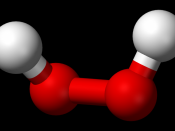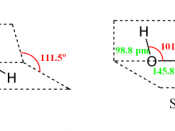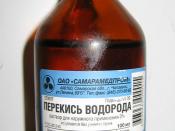Factors affecting the catalytic decomposition of Hydrogen peroxide
Please refer to the additional files for tables/graphs.
Aim- The purpose of this investigation is to investigate how certain factors affect the catalytic decomposition of Hydrogen peroxide. I will investigate the effect of altering the mass of catalyst used on the rate of the decomposition of Hydrogen peroxide.
Introduction-
The decomposition of Hydrogen peroxide is a process by which Hydrogen peroxide decomposes into water and Oxygen. It has the following equation:
2H2O2 (l) ----> 2H2O (l) + O2 (g)
This reaction does occur spontaneously at room temperature with the presence of Ultraviolet light; however only very slowly. It occurs far faster when a catalyst is used. Catalysts are substances that speed the rate of a reaction without getting involved in the reaction therefore remaining unchanged at the end of it. They do this by lowering by lowering the activation energy of the substrate without being consumed.
A peroxide ion collides with a catalyst ion producing an intermediate which is lower in energy than if two molecules of Hydrogen peroxide collided with each other which lowers the activation energy required for Hydrogen peroxide to decompose. If the Hydrogen peroxide is at a higher concentration, the molecules are more tightly packed together. Therefore there will be more collisions with an entity such as a catalyst. The same is true if more catalyst is present: if more catalyst molecules are present (and open to collision; it is the surface area that matters) then there is an increased chance of a Hydrogen peroxide molecule colliding with a catalyst molecule because there are more catalyst molecules to collide with. Therefore both increasing the concentration of the Hydrogen peroxide and increasing the surface area of the catalyst open to collision may increase the number of collisions...


